#Kansas City Art Exhibition
Explore tagged Tumblr posts
Text
Exploring the Heart of Mexican Artistry at Kansas City's Nelson-Atkins MuseumJuly 15, 2013 - From the Archives

View On WordPress
#Art and Politics#Art History#Art in the Americas#artistic expression#Artistic Legacy#Contemporary Mexican Art#Cultural Heritage#Cultural identity#Diego Rivera#Frida Kahlo#Gerardo Suter#Kansas City Art Exhibition#Latin American Artists#mexican art#Mexican Folklore#Mexican Muralism#Nelson-Atkins Museum#Self-Portraiture#Surrealist Art#Visual Narratives
1 note
·
View note
Text



BLACK HISTORY MONTH: Celebrating Artist Nick Cave!
This week we feature a selection of Soundsuits by multi-disciplinary artist Nick Cave (1959-), and highlighted in the book 30 Americans published in 2013 in association with a traveling exhibition of the same name drawn from the Rubell Family Collection and presented nationally between 2008 and 2014. Born in Missouri, Cave studied Fiber Arts at the Kansas City Art Institute, dance at Alvin Ailey American Dance Theatre in New York City, and completed his MFA at the Cranbrook Academy of Art in Michigan. He now lives and works in Chicago. In a recent interview with Art Basel, Cave describes the liberating experience of creating art from a “foundation of purpose.” He is a “messenger, artist, educator,” he says. “In that order,” he emphasizes.
Cave built his first Soundsuit in response to the Rodney King beatings in 1992, wanting to capture the feeling of being “discarded, dismissed, profiled.” He gathered twigs - also discarded, he thought - and built them into a suit of protective armor. While Cave works from a place of purpose and urgency, objects themselves often instigate the creation of a new suit: ceramic birds, buttons, toys, hair, crocheted granny squares. The immersive quality of the suit is meant to invite the audience into a “place of dreaming,” whether through their larger-than-life static presence in museums, or their celebratory, otherworldly dance in live performances. Cave embraces the playful, inviting, and joyful experience of the suits. “What,” he wonders, “do I need to sort of put in place to allow you to dream?”

If you’re in D.C. this April (and if creepy billionaires haven’t ruined everything by then), go see Nick Cave and his work at the Smithsonian Craft Show. He is the 2025 Smithsonian Visionary Award Winner.
View other Black History month posts.
--Amanda, Special Collections Graduate Intern

#Black History Month#Rubell Family Collection#Rubell Museum#Nick Cave#Soundsuits#30 Americans#Sculpture#Fiber Arts#Dance#Performative Sculpture#African Americans#African American artists#Black artists
99 notes
·
View notes
Text








Paul Jenkins (1923 - 2012) was born in Kansas City. As a teenager he worked in a ceramics factory which inspired him to explore his studies in drawing and painting at the city Art Institute. Paul Jenkins was originally associated with abstract expressionism, which exhibits in his works redefining colour, light and space.
He later moved to New York City, to pursue his passion for art and studied at the Art Students Lounge. Morris Kantor & Yasuo Kuniyoshi became his influential instructors. A year later after moving to Paris, he had his first solo show. Jenkins explored with different techniques with flowing paints, pigments and thicknesses and linear overlays. In 1958, Jenkins titled each canvas Phenomena, with additional identifying words. He believed the work should be descriptive of the process in each painting. Jenkin’s paintings have undergone subtle but definite changes. In the 1960’s a shift of color saturation and exposure of the white areas gave Jenkins's canvases an enhanced feeling of illumination.
https://www.vallarinofineart.com/.../134-paul.../biography/
68 notes
·
View notes
Text
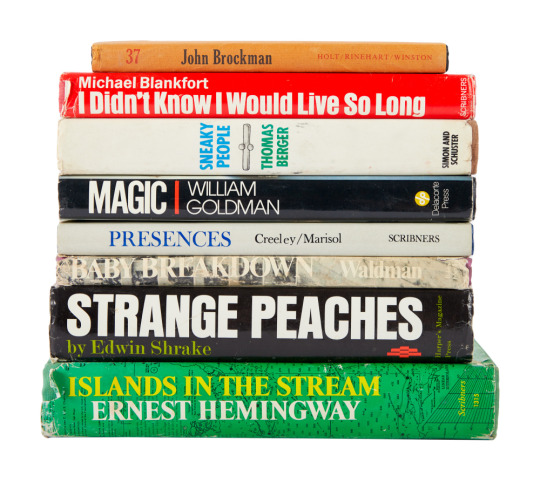
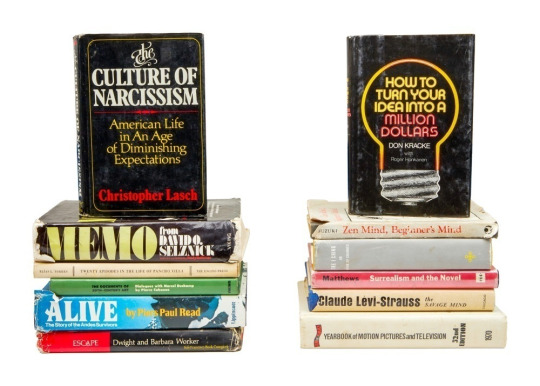
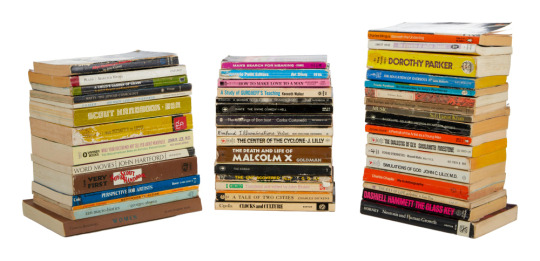


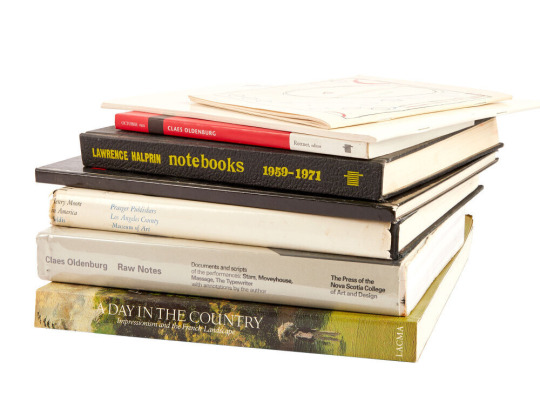
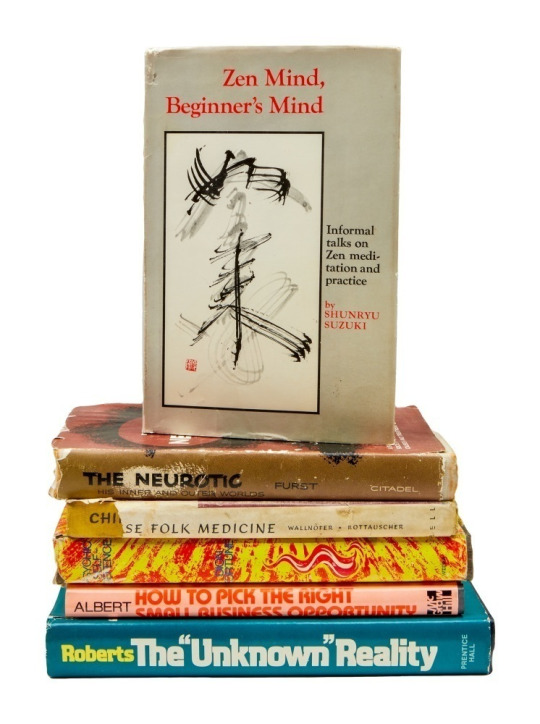
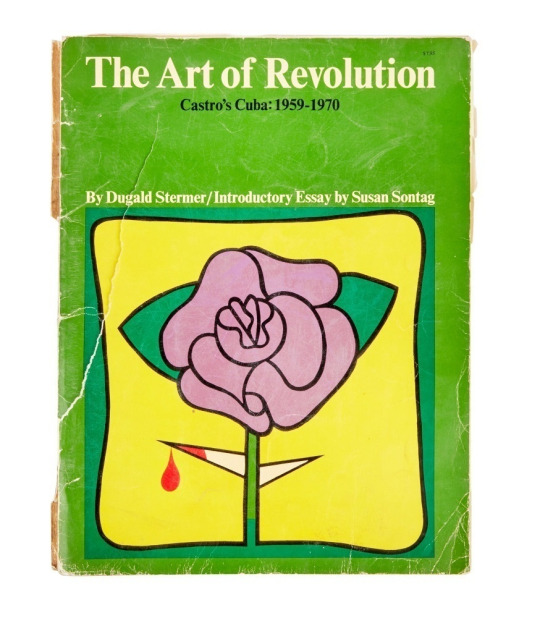
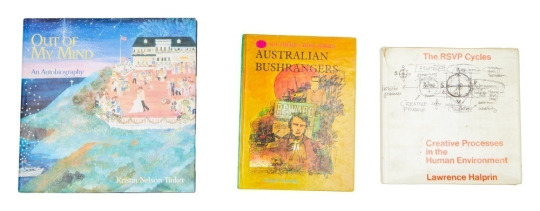
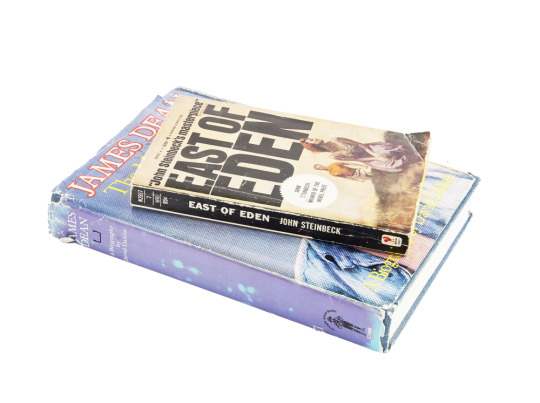
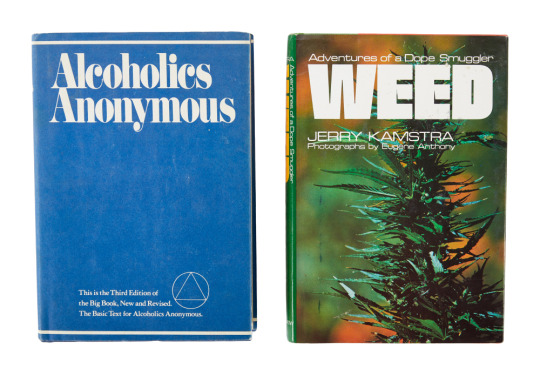
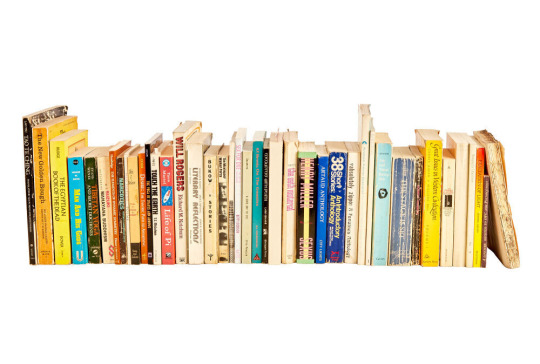
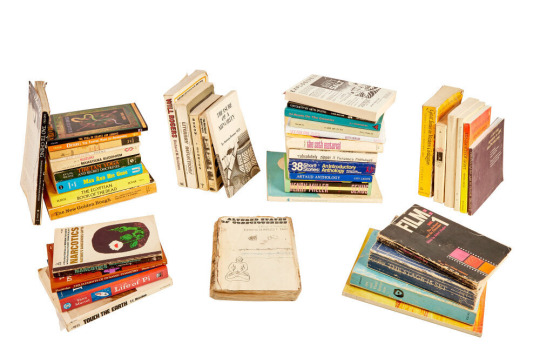
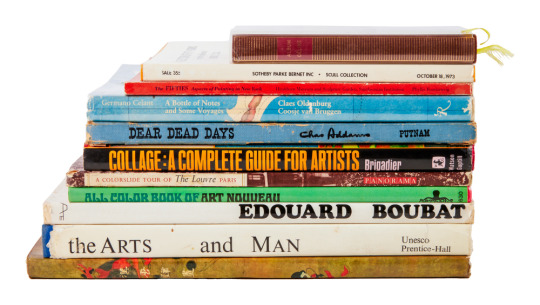
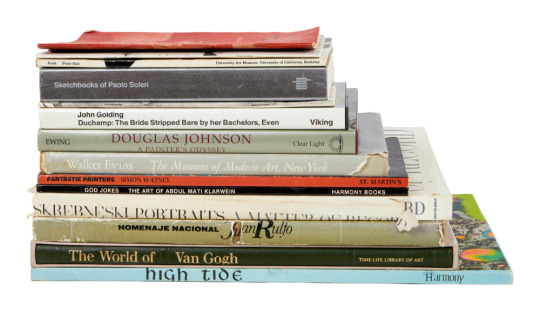
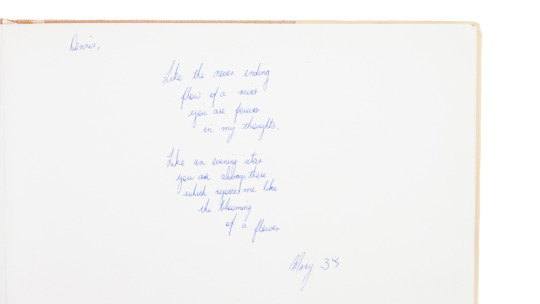
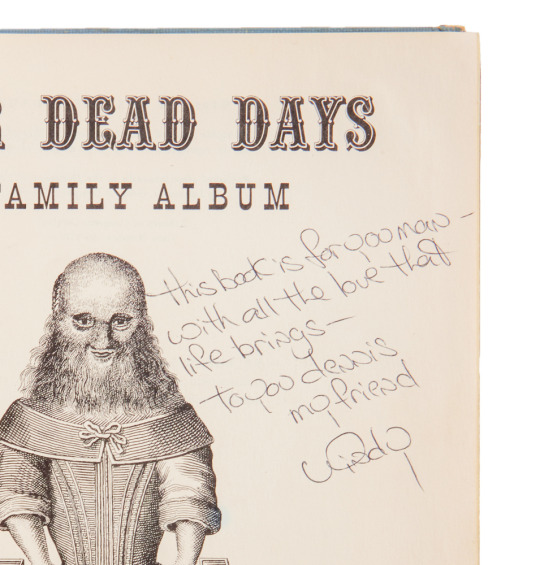
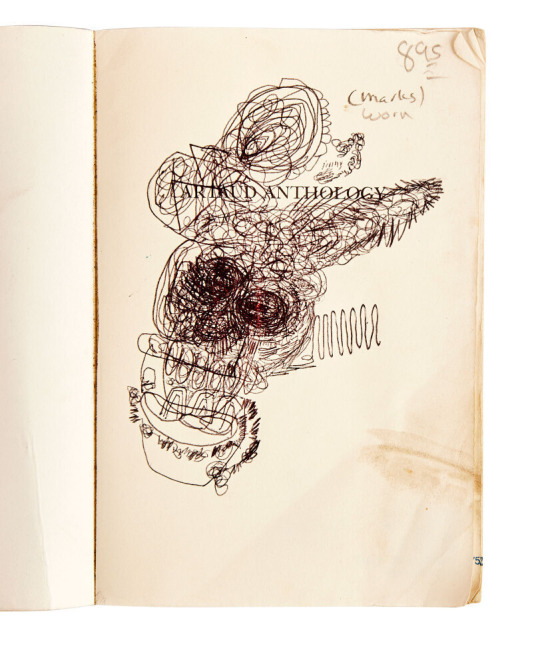
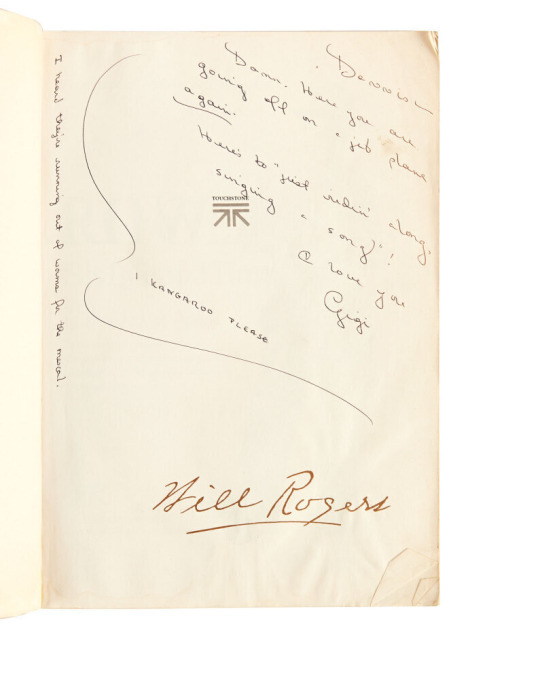
Dennis Hopper's collection of owned and gifted books (a few are listed under the cut)
Islands in the Stream (Charles Scribner's Sons, 1970)
Magic (Delacorte Press, 1976)
Sneaky People (Simon and Schuster, 1975)
Strange Peaches (Harper's Magazine Press, 1972)
I Didn't Know I Would Live So Long (Charles Scribner's Sons, 1973)
Baby Breakdown (The Bobbs-Merrill Company, Inc., 1970)
37 (Holt, Rinehart and Winston, 1970)
Presences: A Text for Marisol (Charles Scribner's Sons, 1970)
Little Prayers for Little Lips, The Book of Tao, The Bhagavadgita or The Song Divine, and Gems and Their Occult Power.
Lolita (G.P. Putnam's Sons, 1955)
The Dramas of Kansas (John F. Higgins, 1915)
Joy of Cooking (The Bobbs-Merrill Company, 1974)
The Neurotic: His Inner and Outer Worlds (First edition, Citadel Press, 1954)
Out of My Mind: An Autobiography (Harry N. Abrams, Inc., 1997)
The Savage Mind (University of Chicago Press, 1966)
Alive: The Story of the Andes Survivors (J.B. Lippincott Company, 1974)
The Documents of 20th Century Art: Dialogues with Marcel Duchamp (Viking Press, 1971)
The Portable Dorothy Parker, A Portrait of the Artist as a Young Man, I Ching, and How to Make Love to a Man.
John Steinbeck's East of Eden (Bantam, 1962)
James Dean: The Mutant King (Straight Arrow Books, 1974) by David Dalton
The Moviegoer (The Noonday Press, 1971)
Erections, Ejaculations, Exhibitions and General Tales of Ordinary Madness (City Light Books, 1974)
Narcotics Nature's Dangerous Gifts (A Delta Book, 1973)
The Egyptian Book of the Dead (Dover Publications, 1967)
Tibetan Yoga and Secret Doctrines (Oxford University Press, 1969)
Junky (Penguin Books, 1977) by William S. Burroughs
Weed: Adventures of a Dope Smuggler (Harper & Row, 1974)
Alcoholics Anonymous (Alcoholics Anonymous World Services, 1976)
Skrebneski Portraits - A Matter of Record, Sketchbooks of Paolo Soleri, and High Tide.
Raw Notes (The Press of the Nova Scotia College of Art and Design, 2005)
Le Corbusier (Heidi Weber, 1965)
Henry Moore in America (Praeger Publishers, 1973)
Claes Oldenburg (MIT Press, 2012)
Notebooks 1959 1971 (MIT Press, 1972)
A Day in the Country (Los Angeles County Museum of Art, 1985)
Album Celine (Gallimard, 1977)
A Selection of Fifity Works From the Collection of Robert C. Scull (Sotheby Parke Bernet, Inc. 1973)
Collage A Complete Guide for Artists (Watsun-Guptill Publications, 1970)
The Fifties Aspects of Painting in New York (Smithsonian Institution Press, 1980)
A Bottle of Notes and Some Voyages (Rizzoli International Publications, 1988)
All Color Book of Art Nouveau (Octopus Books, 1974)
A Colorslide Tour of The Louvre Paris (Panorama, 1960)
Dear Dead Days (G. P. Putnam's Sons, 1959)
Woman (Aidan Ellis Publishing Limited, 1972)
The Arts and Man ( UNESCO, 1969)
Murals From the Han to the Tang (Foreign Languages Press, 1974)
A (Grove Press Inc., 1968)
Andy Warhol's Index Book (Random House, 1967)
Voices (A Big Table Book, 1969)
Another Country (A Dell Book, circa 1960s)
On The Road (Signet, circa 1980s)
97 notes
·
View notes
Text

MWW Artwork of the Day (1/13/25) Claude Monet (French, 1840–1926) Boulevard des Capuchines (c. 1873-74) Oil on canvas, 80.4 x 60.3 cm. Nelson-Atkins Museum of Art, Kansas City MO
Today, we view this celebrated painting by Monet as a convincing depiction of a bustling Paris boulevard as it might appear from high above, seen through the cold, damp air of winter. Typically Impressionist are the blue shadows and bold, individual brush strokes used to indicate pedestrians whose forms become blurred in motion. In the first Impressionist exhibition of 1874, where either this painting or another similar version was exhibited, such marks were described by a critic accustomed to precise outlines and controlled brushwork as “black tongue-lickings.” Most of the general public agreed.
10 notes
·
View notes
Text
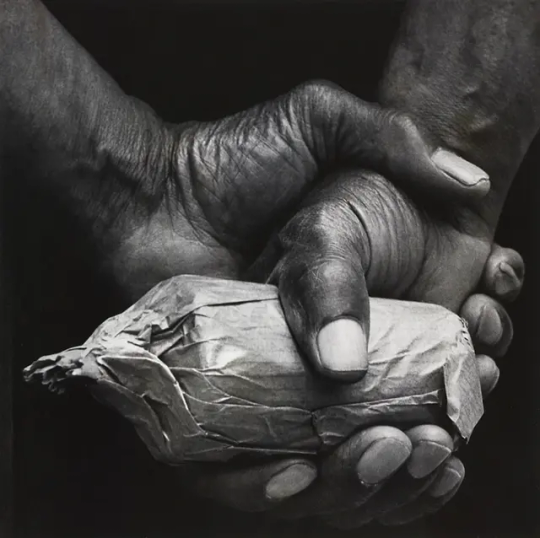
Dave Heath (American, 1931-2016) Philadelphia, 1952 1952 The Nelson-Atkins Museum, Kansas City, Missouri: Gift of the Hall Family Foundation
ttps://artblart.com/2015/12/09/exhibition-multitude-solitude-the-photographs-of-dave-heath-at-the-philadelphia-museum-of-art/
43 notes
·
View notes
Text
HUgE April 2011
Black swan
Preaching Blues
Good-for-nothing man's blues
Jean-Michel Basquiat
Text by Kunichi Nomura
illustration by SkateThing

Those who grew up in the 80s will be familiar with Basquiat's paintings. His style is somewhat primitive, as if a young child with paint and brushes splattered color onto canvas or pieces of wood. These works, in which names and words dance across the canvas like codes, were imitated and consumed in all sorts of settings. When I first saw Basquiat's paintings, my reaction was similar to when I saw a Picasso painting in art class at school: "Even I could draw that." As a child, I couldn't understand why Basquiat's paintings were so highly acclaimed.
Basquiat was a superstar born out of the New York art scene of the 1980s, which was booming during the bubble economy. Born in 1960 to a Haitian father and a Puerto Rican mother in Prussia, Basquiat spoke English, French, and Spanish from an early age, and when his son showed signs of artistic talent, his parents gave him a gifted education, taking him to art museums. After his parents divorced and his son moved to Puerto Rico, Basquiat went to high school and started a project with his friends. Using the name "SAM ○," an abbreviation of "Same Old Shit," they tagged poems and phrases as pseudo-religion on walls downtown. This activity, unlike the tagging that was rampant on subways at the time, attracted attention from those around him as it evoked poetry and philosophy. Having wanted to be famous from an early age, Basquiat decided to drop out of high school, ran away from home and was disowned by his parents. He started working as a postal worker, hanging around friends' houses in Manhattan to make money. He began making and selling cards and T-shirts. In the late '70s, No Wave and graffiti were popular in New York, and many clubs and discos were filled with creative, ephemeral energy. Basquiat played freely in the New York nightlife. He went to the Mudd Club and studios, hung out with the then unknown Madonna, and formed a band with Vincent Gallo called Grey, performing at venues such as CBGB and Max's Kansas City. It was around this time that he appeared on Glenn O'Brien's cult show TV Party and in a Blondie music video, steadily spreading his name as the face of Downtown.
For Basquiat, a major turning point in his life as an artist was his participation in the group exhibition "Times Square Show." His unique style of work was brought into the limelight, and after a review of his work was published in an art magazine, he signed a contract with gallerist Annina Nosei, held a successful solo exhibition, and rose to the top of the art world as a darling of the times. The art world, which had been suffocated by conceptual art and minimal art, enthusiastically supported Basquiat along with artists such as Julian Schnabel and David Salle, a group known as Neo-Expressionism. And as if in response, Basquiat painted nonstop. Partying day and night, endless drugs, and money was all around Basquiat. The dreadlocked Basquiat painted while dressed in expensive Armani suits. Basquiat was a star not only in New York but also in Europe.
He was successful in the art world, and soon, at the suggestion of a gallerist, he began working with Andy Warhol, who was his hero along with William S. Burroughs. This collaboration, a masterpiece, a product of commercialism for money, and controversial, attracted more than enough attention to make an impact on the world. However, Basquiat believed the rumors that Warhol was using him, and he began to distance himself from him. This was perhaps Basquiat's peak, when he appeared on the cover of The New York Times, marking the peak of his career as an artist. However, the more success he gained, the more people around him distanced himself from him, and the more drugs he took. He was an imaginary star created by gallerists, a flower in the twilight of an era dominated by commercialism. Warhol was the only friend he had who could understand him, but when Warhol died of an illness in 1980, he could no longer see anything ahead. Basquiat died of a heroin overdose in his New York studio in August 1988. He was 27 years old, an age considered a dead end for rock stars, and his life was one that would never allow him to progress beyond that age.
Basquiat's thousands of works are still printed in large quantities and scattered around the world. It is unclear whether they were real art or fabricated fiction. However, in recent years, major retrospectives have been held in Brooklyn and Paris. The real paintings on display at these major retrospectives are full of a sense of dynamism that cannot be felt in prints, with paints dancing and exploding, and long lines form every day in various places in order to see the real thing.
6 notes
·
View notes
Text









Ralph Waldo Emerson Barton (Ralph Barton), born August 14, 1891 was a popular American caricaturist of contemporary actors and other popular people. His works enjoyed great popularity in the 1920s and were considered to be the quintessence of the era.
A Short Biography of Ralph Barton by Bobb Edwards:
"Cartoonist, Illustrator. He was one of America's most famous artists of the 1920s. His stylish celebrity caricatures, playful yet not mocking, became synonymous with the "Jazz Age" and were widely influential. "It is not the caricaturist's job to be penetrating," he said. "It is his job to put down the figure a man cuts before his fellows in his attempt to conceal the writhings of his soul." Ralph Waldo Emerson Barton was born in Kansas City, Missouri. His mother was a portrait painter, and in his teens he sold cartoons to local newspapers. Following a brief early marriage and even briefer study at the Art Institute of Chicago, he settled in New York City in 1913 as a contributor to the humor magazine "Puck." Its editors sent him to France in 1915 to cover the Parisian home front during World War I; the experience turned him into an ardent Francophile and from then on he divided his time between Manhattan and Paris. His style showed the influence of Aubrey Beardsley before evolving into Art Deco sleekness. Barton's fame really took off after the war, when he began portraying stars of the arts and entertainment worlds, often in fanciful group portraits. He commanded $1500 per drawing for such leading publications as "Vanity Fair," and his designs appeared on silk scarves and other fashion accessories. In 1922 he caused a sensation with his intermission curtain for the popular Broadway revue "Chauve Souris," featuring 139 celebrity caricatures staring back at the audience. Barton was an artistic advisor for the magazine "The New Yorker" from its 1925 inception, and that same year he illustrated Anita Loos' classic novel "Gentlemen Prefer Blondes." He also photographed and directed a home movie version of "Camille" (1926), which combined staged scenes with shots of dozens of international notables clowning or just posing for Barton's camera, linked together with ironic intertitles. It survives as a fascinating curio. Barton's success masked a troubled personal life. Having "climbed out of the Kansas City mud" (as he was fond of saying), he reinvented himself as a foppish bon vivant who travelled widely and seemed to know everybody who was anybody. He was particularly good friends with Charlie Chaplin. But he was plagued by depression and a lack of self-esteem that drove him to reckless behavior. "The human soul would be a hideous object if it were possible to lay it bare," he once confessed. His three subsequent marriages, to model Anne Minnerly, actress Carlotta Monterey, and "Les Six" composer Germaine Tailleferre, all ended in divorce because of his compulsive philandering; he never got over Carlotta, who he claimed was the only woman he ever really loved. (She later married playwright Eugene O'Neill). The failure of his book "God's Country" (1929), a satirical view of American history through drawings, and the onset of the Depression marked a downturn in his popularity. In January 1931, Chaplin tried to raise Barton's spirits by inviting him as his traveling companion on an extended tour of Europe. The cartoonist started the journey well enough, but once they arrived in London he refused to leave their hotel and began exhibiting signs of paranoia. He returned home alone after only a few weeks. Fearing he was going insane, Barton shot himself in his Manhattan apartment shortly before his 40th birthday. His suicide note read in part, "I have run from wife to wife, from house to house and from country to country in a ridiculous effort to escape from myself." He also left $35 to his housekeeper with a note apologizing that it was all he had. His ashes were returned to Kansas City, the hometown he proudly thought he had put behind him. Barton was quickly forgotten after his death; a few years later an original Barton caricature sold for $5. Renewed interest in his work began in the late 1960s."
3 notes
·
View notes
Text
Arthur Leipzig



Arthur Leipzig (1918-2014) was born in Brooklyn, New York. He began his career in photography when he enrolled in a class with the Photo League in 1941. Initially attracted by the school’s low darkroom fees, he was convinced that he wanted to seriously pursue documentary photography within two weeks of studying with its founder, Sid Grossman. Leipzig was an active member of the Photo League until 1949, learning from the work of Paul Strand and W. Eugene Smith. In 1942, he became a staff photographer for the newspaper PM, a liberal publication that used photography in abundance on its pages and allowed its photographers free reign. After the newspaper folded in 1946, Leipzig worked for a brief stint at International News Photos before beginning a successful career in freelance photojournalism, traveling on assignments around the world and contributing to such periodicals as The Sunday New York Times, This Week, Fortune, Look, LIFE, and Parade.
Leipzig shot thousands of rolls of film over five decades, producing beautifully constructed yet socially powerful photographs that take a sincere look at street life. Among the most memorable are photo essays on children’s street games, city workers atop the Brooklyn Bridge, Coney Island, and V-Day. Leipzig candidly captured New York’s favorite personalities as Louis Prima, W.C. Handy and Mayor La Guardia. His assignment locales outside of New York City included Peru, Sudan, and the Sahara, as well as places closer to home like West Virginia, Kansas and Jones Beach.
Acclaimed as a sensitive and impassioned documentary photographer, Arthur Leipzig has always directed his camera toward the human condition and his deep love of people, shooting in a straightforward fashion, never forcing the moment but rather allowing a human story to transform simply and spontaneously. As a result, his photographs depict the human community with great intimacy and dynamic energy.
Leipzig has been included in many museum group exhibitions, most notably "New Faces" (1946) and "Family of Man" (1955) at the Museum of Modern Art, as well as the Metropolitan Museum of Art's "Photography as a Fine Art" (1961-62). His solo exhibitions include: "Growing Up in New York: Photographs by Arthur Leipzig" at the Museum of the City of New York (1996), and “Arthur Leipzig: A Tribute to Influence” at the Columbus Museum of Art (2005). His work is represented in the permanent collections of the Museum of Modern Art, the Brooklyn Museum, the National Portrait Gallery, the Jewish Museum, the Art Institute of Chicago, the International Center of Photography, and the Bibliothèque Nationale, among others.
Leipzig’s honors include the National Urban League Photography Award, several annual Art Directors Awards, and two Long Island University Trustees Awards for Scholarly Achievement. He was the recipient of the Lucie Award for Outstanding Achievement in Fine Art Photography in 2004. Additionally, Leipzig shared his talent and passion for photography by teaching at Long Island University for nearly three decades, where he became Professor Emeritus.




COLOSSAL
#arthur leipzig #original art
#photographer #art #fotos art
#xpuigc
6 notes
·
View notes
Text
Katharine Hepburn - The Greatest Female Star










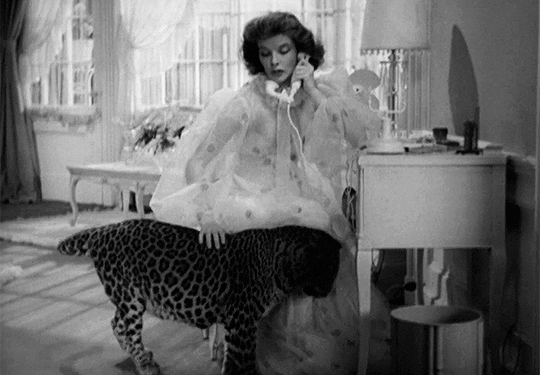
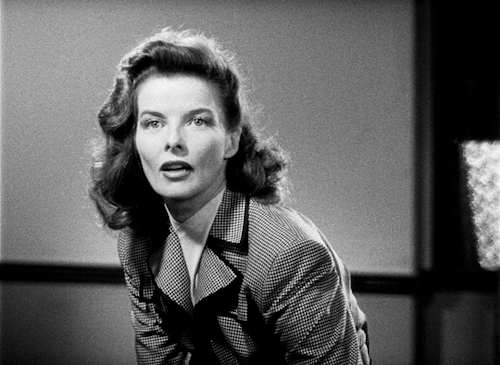
Katharine Houghton Hepburn (born in Hartford, Connecticut on May 12, 1907) was an iconic American actress who holds the record for the most wins for an actor in Oscar history and is considered to be "The Greatest Female Star" of classic Hollywood.
Raised in Connecticut by wealthy, progressive parents of English and Scottish heritage, Hepburn began to act while at Bryn Mawr College, where she graduated with a degree in history and philosophy. Favorable reviews of her on Broadway got the attention of Hollywood, where director George Cukor pushed for her to sign a contract with RKO at 1932.
Her early films brought her fame, but this was followed by commercial failures. She masterminded her comeback, buying out her contract and acquiring rights to The Philadelphia Story, which she sold on the condition that she be the star. The film was a success and landed her a 3rd Oscar nomination in 1940.
She continued to have acclaimed films, including her last Oscar for On Golden Pond (1981). In the 1970s, she began appearing on TV alongside her film and stage roles. She made her final screen appearance at 87. After a period of inactivity and ill health, she died from cardiac arrest at 96 at the Hepburn family home in Fenwick, Connecticut.
Legacy:
Won four Academy Awards for Best Actress: Morning Glory (1933), Guess Who's Coming to Dinner (1967), The Lion in Winter (1968), On Golden Pond (1982) - and nominated for eight (1936, 1941, 1943, 1952, 1956, 1957, 1960, 1963), holding the record for the longest time span between first and last nominations, at 48 years
Won the 1975 Primetime Emmy Award for Outstanding Actress in a Special - Drama or Comedy and nominated for six (1974, 1979, 1986, 1993)
Nominated for 11 Golden Globe Awards (1952, 1956, 1959, 1962, 1967, 1968, 1981, 1992); two Tony Awards (1970, 1982); the 1994 Screen Actors Guild Award; and the 1988, 1992 Grammy Best Spoken Word Album
Received two BAFTA Best Actress awards (1969, 1983) and five nominations (1953, 1956, 1958)
Won the Volpi Cup for Best Actress at the 1934 Venice Film Festival; Best Actress at 1962 Cannes Film Festival; and the Special Prize of the Jury at 1984 Montréal World Film Festival
Won the 1940 New York Film Critics Circle Best Actress, the 1965 Mexican Cinema Journalists Best Foreign Actress, and the 1973 Kansas City Film Critics Circle Best Actress
Won three Golden Laurel Awards for Top Female Dramatic Performance in 1960, 1963, and 1970, and nominated as Top Female Star in 1970 and 1971
Received the David di Donatello Award for Best Foreign Actress for Guess Who's Coming to Dinner (1967)
Won Golden Apple Awards for Female Star of the Year in 1975 and 1982; and Favorite Motion Picture Actress at the People's Choice Awards in 1976 and 1983, and nominated in 1975, 1977
Received a Lifetime Achievement Award from the Screen Actors Guild in 1979
Purchased war bonds worth #30K to support the Hartford Red Cross in 1941 and donated $10K to Hartford Hospital in 1947
Selected by Harvard University as 1958 Hasty Pudding Woman of the Year
Featured in exhibits, such as The Career of an Actress: Katharine Hepburn at the MoMA in 1969, One Life: Kate, A Centennial Celebration at the National Portrait Gallery in 2007, Katharine Hepburn: In Her Own Files at the NYPL in 2009, and Katharine Hepburn: Dressed for Stage and Screen at Kent State University in 2010
Supported Planned Parenthood since 1981 with the Katharine Houghton Hepburn Fund and received the Margaret Sanger Award in 1983
Inducted into the American Theater Hall of Fame in 1979, the Connecticut Women's Hall of Fame in 1994, and the Online Film and Television Association Hall of Fame in 1999
Received the 1985 Humanist Arts Award from the American Humanist Association and the Lifetime Achievement Awards from the Council of Fashion Designers of America in 1985, the American Comedy Awards in 1985 and the Kennedy Center Honors in 1990
Released her 1991 autobiography, Me: Stories of My Life
Awarded an honorary doctorate by Columbia University in 1992
Has had a garden in her name since 1997 and an intersection, Katharine Hepburn Place, since 2003 in New York
Named the greatest female star of classic Hollywood cinema in 1999 by the American Film Institute
Named in Ladies Home Journal's 1998 book 100 Most Important Women of the 20th century; Encyclopædia Britannica's 300 Women Who Changed the World in 2006; the 2007 book Women Who Changed The World; and Variety's 100 Icons of the Century in 2005
Ranked #68 in in Empire’s Top 100 Movie Stars in 1997; #2 in Entertainment Weekly’s 100 Greatest Movie Stars of All Time in 1998; #84 in VH1's "200 Greatest Pop Culture Icons of All Time" in 2003; #14 in Premiere's 50 Greatest Movie Stars of All Time in 2005 and #13 and #54 in 100 Greatest Performances of All Time in 2006 for The Lion in Winter (1968) and The Philadelphia Story (1940)
Featured in the 2002 play, Tea at Five, and a two-month retrospective by the British Film Institute in 2015
Has personal collections at The Academy of Motion Picture Arts and Sciences library, the New York Public Library, and the University of Hartford since 2003
Became the namesake of Bryn Mawr College's Katharine Houghton Hepburn Center, which manages the Hepburn Fellows Program, Hepburn Scholarships, and the Katharine Hepburn Medal, since 2006
Inspired the The Katharine Hepburn Cultural Arts Center, which opened in 2009 in Old Saybrook and runs the Katharine Hepburn Museum and the Spirit of Katharine Hepburn Award
Became the 16th star honored by US Postal Service's Legends of Hollywood stamp series in 2010
Honored as Turner Classic Movies Star of the Month for January 2004 and June 2023
Has a star on the Hollywood Walk of Fame at 6294 Hollywood Blvd for motion picture

#Katharine Hepburn#The Greatest Female Star#The Great Kate#Silent Films#Silent Era#Silent Film Stars#Golden Age of Hollywood#Classic Hollywood#Film Classics#Old Hollywood#Vintage Hollywood#Hollywood#Movie Star#Hollywood Walk of Fame#Walk of Fame#Movie Legends#hollywood legend#movie stars#1900s#28 Hollywood Legends Born in the 1900s
3 notes
·
View notes
Text
Eras tour ass kissing olympics round 1 group 4
Vote for which of these cities you think did the best ass kissing! (please reblog for more votes). This is purely an elimination round before the bracket voting begins
East Rutherford- Taylor Swift ham, egg, and cheese named the official state sandwich, Museum of arts and design opened a Taylor Swift: Storyteller exhibit Detroit- Welcomed with letter with track titles Cincinnati- Changed Taylor avenue -> Taylor Swift avenue Kansas City- Crop art welcoming her, Swift street renamed Swift street (Taylors Version) Santa Clara- Renamed Swiftie Clara, and Taylor became honorary mayor
Explanation of different rounds
Group 1 | Group 2 | Group 3
37 notes
·
View notes
Text
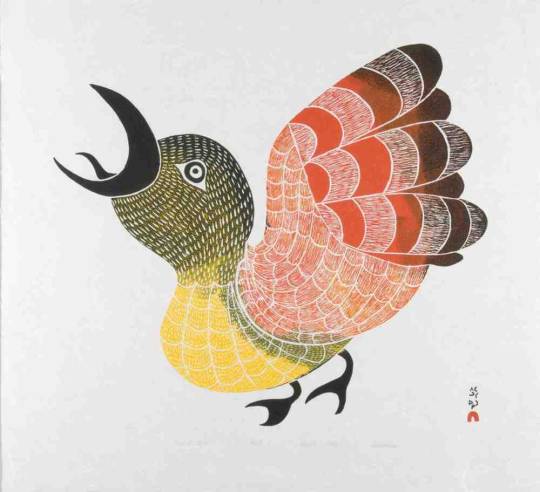
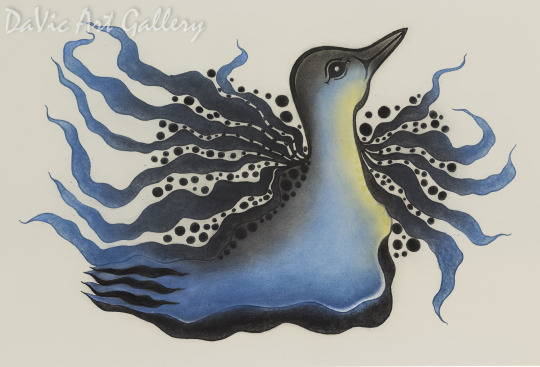
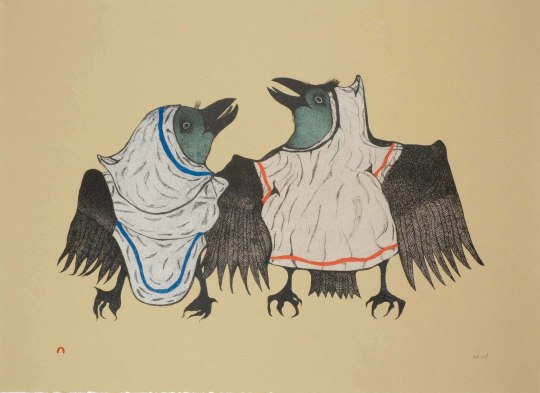
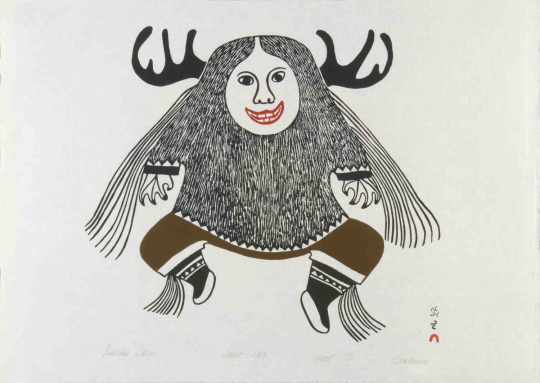
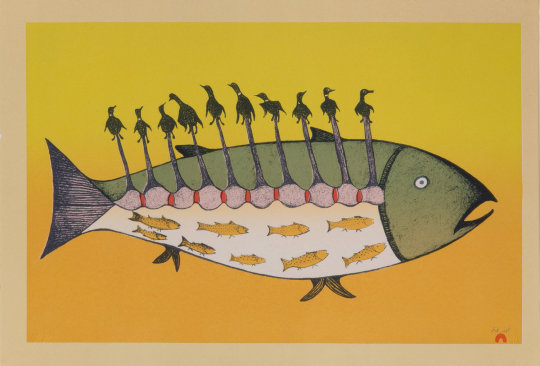
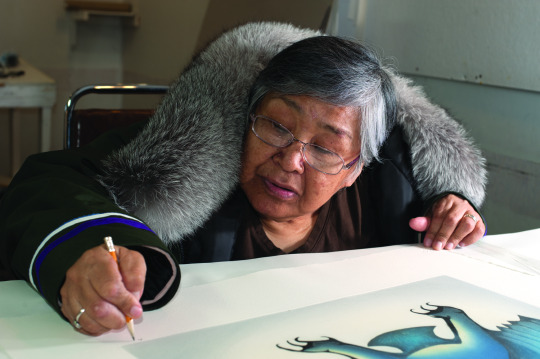
Pitaloosie Saila
1942-2021
"I remember how Inuit used to live, thinking of them back then, my relatives. I also recall how the clothing was made; that is what I base my drawings on when I draw people."
- Pitaloosie Saila (from “Kinngait: Riding Light Into the World; Producer: Site Media; Director: Annette Mangaard)
Pitaloosie was born in 1942 on the southwest coast of Baffin Island near what is now the community of Cape Dorset. She spent her childhood years in various hospitals in Quebec and Ontario for treatment of tuberculosis. She learned
English during this time, and recalls the difficulty she experienced in relearning her native language upon her return to Baffin Island in 1957. She is now one of the few of her generation who speak both English and Inuktitut fluently.
Pitaloosie began drawing in the early 1960’s, and quickly established herself as a versatile and intelligent graphic artist.
Over the years, she has become a familiar presence in the Kinngait Studios, and her work has been included in annual
print collections since 1968.
Since the late 1960’s, Pitaloosie has made frequent trips to southern Canada to attend exhibitions and conferences. In 1967, she spent several weeks in Toronto while her husband, the well-known sculptor Pauta Saila, participated in an International Sculpture Symposium. Subsequently, she has visited Halifax, Toronto, Ottawa, Kansas City and Vermont. Her work has been featured in solo drawing exhibitions, and in 1977, Canada Post issued a stamp depicting her print, Fisherman’s Dream. Her 1985 lithograph entitled In the Hills represented the Northwest Territories in the centennial celebration of the National Parks of Canada. Amnesty International, the international human rights organization, selected a drawing by Pitaloosie entitled Mother and Child to use for their 1990 Christmas card. She was also one of nine featured artists in the acclaimed exhibition Isumavut: The Artistic Expression of Nine Cape Dorset Women, which opened at the Canadian Museum of Civilization in the fall of 1994 and continues to travel to other venues. Pitaloosie’s husband, Pauta, passed away in Cape Dorset in June of 2009 at the age of 93. In 2004, both she and Pauta were appointed members of the Royal Canadian Academy of the Arts, in recognition of their life’s work and contributions to Canadian art.
42 notes
·
View notes
Video
youtube
Vintage Burlesque, Sally Rand's Bubble Dance, Remixed w/ New Music
Here we present the star attraction of the 1933-34 Chicago Century of Progress World's Fair. In this clip we see her doing not her famous fan dance but the sensually art deco bubble dance. We have added some special effects to the original film and added an original soundtrack by Captain Zero & the Radioactive Lovers Born Hattie Helen Gould Beck dancer Sally Rand began her career as a chorus dancer at the tender age of thirteen in Kansas City. While still a teenager Sally ran away with a carnival drifting west to Hollywood and the movies. By then Hattie had changed her name to Billy Beck and she found steady if not spectacular work, including some time working in the stock company of the great director Cecil B. Deville who gave Hattie her more famous name. Sally's movie career ended with the advent of the talkies due to her lisp. She went back to dancing which was her first love anyway. A resourceful gal looking for steady work she combined this love for dance with the average man’s desire to behold the female form and began experimenting with various forms of tease dancing. In 1932 while working at the Paramount Club in Chicago Sally developed her fan dance that would bring her fame and fortune. She was to become the mistresses of appearing to be naked and her big splash came at Chicago's Century of Progress World's Fair held in 1933 -34. For her arrival at the gates of the fair she recreated Lady Godiva's ride that along with her ensuing performance resulted with her being arrested four times in one day. At her trial the judge threw the charges out and in his decision said. "There is no harm and certainly no injury to public morals when the human body is exposed, some people probably would want to put pants on a horse. . . . When I go to the fair, I go to see the exhibits and perhaps to enjoy a little beer. As far as I'm concerned, all these charges are just a lot of old stuff to me. Case dismissed for want of equity." -- Superior Judge Joseph B. David - July 19, 1933 Even after the charges were dropped powerful forces sought to keep her from performing but her popularity was so great that they couldn't stop her. Wnen the fair reopened in 1934 she prsented the dance featured in this video the less risqué bubble dance. Sally did more road work for a few years before returning to southern California. There she briefly returned to the movies before moving to San Francisco. In 1939 she presented "Sally Rand's Nude Ranch" at the Golden Gate Exposition in San Francisco. It featured women wearing cowboy hats, gun belts and boots, and little more. Afterwards she took over The Great American Music Hall and started her own burlesque house and continued to perform for many years.
4 notes
·
View notes
Text
NY / &&&2
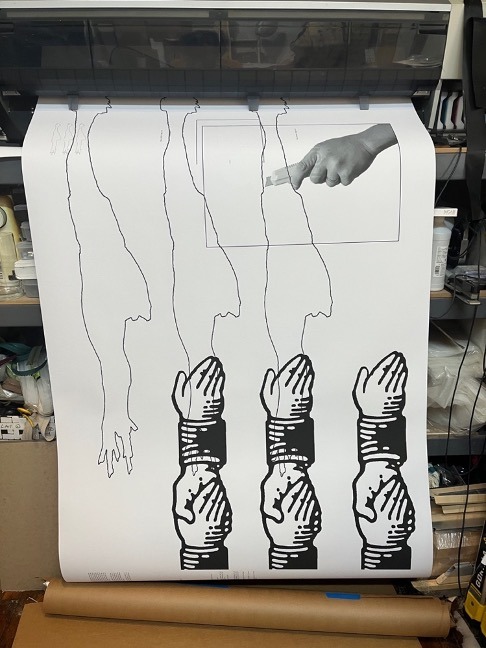
&&&2 January 6, 2024 – February 18, 2024 Opening Reception: Jan 6, Saturday 6-8PM A talk with the artists will be scheduled in February
Tiger Strikes Asteroid New York is pleased to present &&&2, a bi-coastal exhibition that serves as both a survey and sequel to the collaborations of Ethan Greenbaum, David Kennedy Cutler and Sara Greenberger Rafferty.
Ten years ago, the artists initiated a series of meetings to talk about materials and techniques, based on their mutual interest in using photographic imagery to destabilize traditional art categories like painting, printmaking and sculpture.
The meetings resulted in an artist’s book titled &&&, in which the three artists imagined themselves as a fictional industrial supply firm. For Greenberger & Greenbaum & Cutler &, the fictional company had a veneer of prestige. For these capitalist outsiders, a corporate symbol of joint commercial enterprise was almost tantamount to success.
The book was released at Printed Matter’s NY Art Book Fair in 2013 in both a mass market paperback and a boxed, limited special edition print series based on swatch sample catalogs. The intention of the project was lost on nearly everyone, but a few key people became aware of the artists’ positioning themselves as a small movement. This included the photography curator Dan Leers, who organized a show and catalog of their work, Beyond The Surface: Image as Object, at the Philadelphia Photo Arts Center in 2014.
To commemorate the 10th anniversary of &&&, Sun You has invited Greenberger & Greenbaum & Cutler to mount an exhibition at TSA in Brooklyn, NY. There will also be a simultaneous version of the show at Ditch Projects in Springfield, OR. The exhibitions at both artist-run spaces feature a backdrop that wraps the gallery with deconstructed pages from the original &&& book, over which the artists have installed works from 2013 and 2023. The original book is also exhibited, as well as a new portfolio of prints (&&&2) to celebrate ten fruitful years of collaboration, hand wringing and friendship
Ethan Greenbaum is a New York based artist. Selected exhibition venues include KANSAS, New York; Derek Eller Gallery, New York; Hauser and Wirth, New York; Marlborough Chelsea, New York, Higher Pictures, New York; New York; Marianne Boesky, New York, Circus Gallery, Los Angeles; Steve Turner, Los Angeles; The Suburban, Chicago; Michael Jon & Alan, Miami, The Aldrich Museum, Connecticut; Socrates Sculpture Park; Long Island City and Stems Gallery, Brussels. Recent projects include a solo presentation with Lyles & King and solo exhibitions at Galerie Pact, Paris and Super Dakota, Brussels.
His work has been discussed in The New York Times, Modern Painters, Artforum, BOMB Magazine, ArtReview and Interview Magazine, among others. Ethan is a co-founder and editor of thehighlights.org and his writings have appeared in the Brooklyn Rail, Wax Magazine, BOMB, Paper Monument and others. He has also curated and co-curated multiple exhibitions at venues including The Suburban, Chicago; Lyles & King, New York and Super Dakota, Brussels. Greenbaum is the recipient of the Queens Art Fund New Work Grant, the Silver Art Residency, The Keyholder Residency at the Lower East Side Printshop, Dieu Donne’s Workspace Residency, LMCC’s Workspace Program, The Robert Blackburn SIP Fellowship, The Socrates EAF Fellowship, The Edward Albee Foundation Residency and The Barry Schactman Painting Prize. He received an MFA in Painting from Yale School of Art.
David Kennedy Cutler is an artist, writer and performer who lives and works in Brooklyn, New York. Cutler received his BFA from The Rhode Island School of Design in 2001. He has had solo exhibitions at Derek Eller Gallery, New York; Halsey McKay Gallery, East Hampton; Essex Flowers, New York; The Centre for Contemporary Art, Tallinn, Estonia and Nice & Fit, Berlin, Germany. Cutler has performed in various spaces in New York including Klaus von Nichtssagend Gallery, Essex Flowers, Printed Matter, Halsey McKay, Derek Eller Gallery, and Flag Art Foundation, and internationally at the Center for Contemporary Arts Estonia, among others. His works are included in the permanent collections of the Wellin Museum at Hamilton College and The RISD Museum, and his artist’s books are included in the libraries of the Whitney Museum and the Brooklyn Museum. He has been reviewed and featured in The New York Times, Artforum, Art in America, The New Yorker and Modern Painter, among others. Cutler is represented by Derek Eller Gallery, NY and Halsey McKay Gallery, East Hampton.
Sara Greenberger Rafferty produces image-based works in paper, plastic, glass, metal, fabric, and video. Her work is driven by an ongoing examination of contemporary and mid-20th century visual culture and considers the ever-changing implications for photographic images in the digital era. She’s also into comedy.
Ditch Projects is a nonprofit artist-founded, artist-run studio, exhibition, and performance space providing contemporary art experiences in Springfield, Oregon. As a collective of artists and professionals committed to exhibiting experimental artists from diverse backgrounds, Ditch Projects provides opportunities for cultural exchange between experimental contemporary art and our local community, acting as an integral voice within contemporary art discourse in the Pacific Northwest. Since its founding in 2008, Ditch Projects has featured over 145 exhibitions and 275 artists. Growing organically out of the concerns of its artist members, Ditch provides contemporary visual arts practitioners with an opportunity to test out new ideas, processes, and approaches they might not otherwise attempt in a comparable urban center. Over the past decade, the primary focus of the artist collective has been on the production and presentation of new works by regional, national and international artists, with a consistent 10-12 solo, two-person or group exhibitions per season. Past exhibiting artists have included internationally renowned practitioners such as Amy Yao, Diana Thater, Scott Reeder, Laura Owens, Jessica Jackson Hutchinsons, and Vito Acconci, along with regionally acclaimed artists such as Ralph Pugay, Amy Bernstein, Lisa Radon, Tannaz Farsi, James Lavadour, and Kristen Kennedy. Exhibitions at Ditch Projects have been reviewed in Art Forum, Frieze, Art in America, and the New York Times. Ditch Projects has received grants from the Andy Warhol Foundation, The Miller Foundation, the Ford Family Foundation, the Oregon Arts Commision, the Oregon Cultural Trust, Oregon Community Foundation, and the WLS Spencer Foundation.
2 notes
·
View notes
Text







……
I am happy to share that my Cyanotype installation “A Mere Breath” has been included in the exhibition Degrees of Commitment : Climate, Ecosystems, And Society which is on view now in the Sandra J. Blain Gallery’s at the Arrowmount School of Arts and Crafts.
Degrees of Commitment: Climate, Ecosystems, and Society was juried by Gina Siepel (she/they), an interdisciplinary artist whose practice reflects a deep engagement with place, history, queer experience, and ecology; and Isabel Vargas (she/her), a Kansas City-based curator and organizer who is dedicated to diversity and equity in the arts.
Per the press release, the work of the 52 artists in the show “demonstrate respect and reverence for the environment and create works that honor the natural world and a shared existence”.
A Mere Breath” was made in situ in response to the Cuyahoga River and is meant to consider the timeless cycles of devastation and recovery occurring along its banks.
My hope is that by shining a light on our local environments, it becomes possible to call attention to their distinctive qualities and create a space for their shared interpretation, understanding, and care.
A big thank you to the Jurors, the other artists and Arrowmount for organizing.
More about the show can be found here:
https://www.arrowmont.org/degrees-of-commitment/
📸 credit Arrowmount School of Arts and Crafts
Sure good time indeed!
#art #contemporaryart #ecology #landscapes #watersheds #alternariveprocessingphotography #printmaking #ohioartist #kentohio #cuyahogariver #arrowmontschoolofartsandcrafts
#arron foster#artists on tumblr#kent ohio#printmaking#people of print#ohioartist#art#contemporary printmaking#contemporary art#alternative photography
2 notes
·
View notes
Text
Leeah Joo is a Korean-American painter based in Connecticut. Born in 1971 in Seoul, Leeah was raised by a sculptor father and an illustrator mother. At age ten, her family moved to Indianapolis, where she spent her youth. She studied painting and art history at Indiana University in Bloomington and received her MFA in painting from Yale School of Art. Her paintings have exhibited widely in U.S. and South Korea and recognized with awards from Pollock Krasner, George Sugarman Foundation and Connecticut Commission on Arts. Since 1996, she has taught and served as visiting artist at many institutions including the Kansas City Art Institute, Maryland Institute College of Art, Hartford Art School and Fairfield University. She lives and paints in Middlebury and teaches at Southern CT State University and Paier College.
75K notes
·
View notes